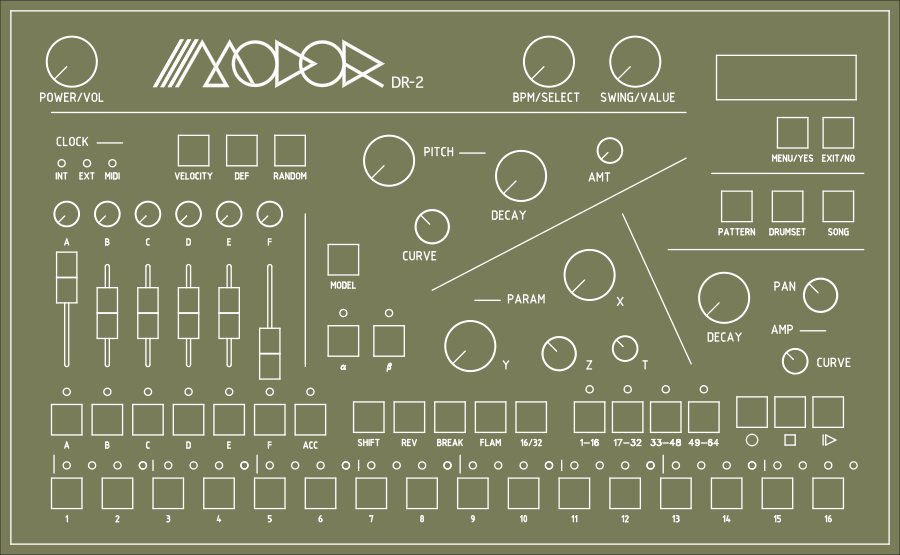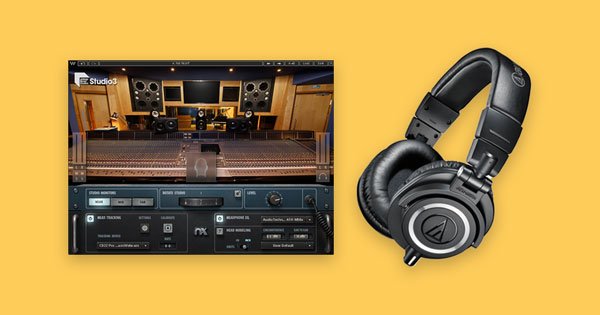Modor’s DR-2 is a monster truck of digital drum machines. Apart from being massive physically, it’s got brutal sounds — aggressive filters, pounding kicks — and its developer keeps packing in more. The latest update now adds bass models to the many features lurking behind this panel.
The DR-2 is just an absolutely beautiful machine – proof that not all drum machines need to be the same.
I’ll do a detailed rundown of the DR-2 soon with a usage guide. The power comes at a price; the menu system at moments is what I might call “hostile,” at least until you follow the logic. So, I want to dig through exactly how you’d program this and how to find its sweet spots in a hurry.

But sonically, and with its meaty, hands-on panel, this machine is an animal. And as much as I love analog machines, the DR-2 is also a cure for the narrow range of compelling sounds they produce. You’ve got some nice TR-inspired machines or the industrial sound of devices like Erica Synths’ PĒRKONS. But you can have just as much unique character on a digital machine, with a greater range, provided there’s love and care applied to voicings. And that’s what MODOR has been doing here, with details like steep filter slopes and cruel diode distortions adding loads of spice. The models that are TR models (like the recently added snare drum) also give you more parameter control than analog models might. (That’s been one of the features I liked on the TR-8S.)
The DR-2 begs to be an all-in-one machine that you focus on in production; now adding bass models means that’s totally possible. You might have coaxed faux basslines out of the percussion parts using pitch sequencing, but that’s no longer a necessity. Whole tracks are begging to be finished on this device. Okay, maybe you’d add effects – the one big missing element on the DR-2. There are separate outs, so attacking this with some pedals seems a logical way to go.
And it sounds sick:
Included:
SAW synth, SQU synth, SIN synth: saw, square, or sine oscillator. Includes a resonant lowpass filter and pitch envelope routed to cutoff frequency (with controllable amount).
FM synth: 2-operator carrier-modulator FM, with ratio, amount, and envelope amount.
Each synth also has a sustain amount for the amp envelope. So what you get is simple, juicy bass with a manageable set of parameters. It has the directness of the 303, and can go acid if you want, but … also doesn’t have to be a 303.
Also in this firmware release (OS013):
- improves synchronisation when slaved to an external clock source
- makes it possible to enable/disable instrument tracks using Midi notes and/or controllers
- adds a Global accent level [ACC+VALUE]
- enables longer bars, with more than 16 steps per bar
Here’s a walkthrough of the update:
Add this to firmware update OS012, which added my other favorite features on this device – the filter hats and rumble kick, which make it a proper techno machine.
Listen to those OS012 models, in particular:
And it even does Euclidean rhythm generation, for when you’re stuck for ideas.
Some feature you might expect – parameter locks. Some you probably won’t. Friend of the site Nicolas Bougaïeff worked on polyrhythmic clocks:
Bougaïeff frequently uses polyrhythmic structures, dividing bars or musical phrases of different instruments into different numbers of steps. Have one instrument play 17 steps in the time another instrument plays only 16 steps, or 8 steps in 5 steps, or… Like stretching N steps of one instrument over M steps of a second one, giving them an N:M speed ratio.
You won’t find this on another device:
You might think the DR-2 is a studio machine, but I beg to differ. Even on-the-fly parts programming is totally possible – I did this without any pre-generated patterns, just improvising. (And I didn’t even use Euclidean rhythms – next time, maybe.) This is not meant to be a product video, but as proof that I took this thing out and tried to play with it – wow, it’s fun:
More info: https://www.modormusic.com/dr2.html
Bonus workshops
Marcel Belmans has also been doing some nice workshops. First, an overview for Klangfarbe Synthopia:
And here’s a more detailed workshop for the mighty SchneidersLaden:




